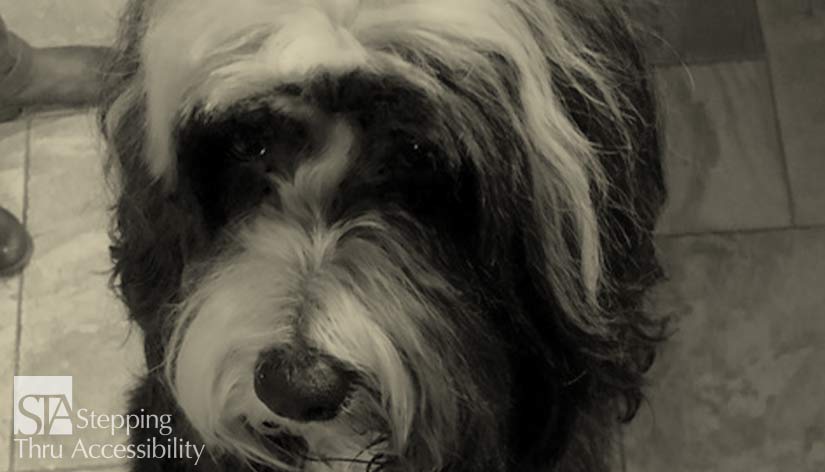Blog
Return to Blog »
Janis Kent, FAIA, Architect, CASp © September, 2021 There has long been discussion about the differences between Service Animals per the ADA Standards and Support Animals per FHA or even Service Animals under the Air Carrier Access Act. But in California, we like to be different. Under all of these regulations, these animals are not considered pets – they are Assistance or Assistive Animals and all do work and perform tasks. And do be aware that there is no ‘certification’ that they are trained for a task, although knowing the work or task they perform is something that can be asked. Service Animals under ADAS pertain to places of public accommodation and to public facilities. The definition has evolved with the 2010 ADA. Since it is an ADA requirement it does not pertain to religious institutions or to exclusive private clubs. DOJ has specifically stated they are either a dog or a miniature horse that has been trained to do work or perform a specific task for someone who has a disability. Here is a synopsis on Service Animals from ADA.gov. Assistance Animals under FHA has a broader definition which can include the Service Animal definition under ADA but also includes the Support Animal definition under FHA, whether trained or untrained, that do work, provide assistance, or perform tasks, or that can additionally provide emotional support. FHA also does not limit the type of animal similar to ADA, although it does state animals that are commonly kept in households can meet the definition of Support Animals. Some consideration can be given for other unique types of support animals, but the burden of proof that the animal is trained for specific tasks is on the resident. HUD has come out with a new clarification – ‘Assessing a Person’s Request to Have a Reasonable Accommodation Under the Fair Housing Act’ which is definitely worthwhile reading for anyone involved in housing. Service Animals under ACAA specifically state that they are a dog that has been trained to do work or perform a specific task for someone who has a disability. ACAA does not consider animals other than dogs to be Service Animals. Nor do they consider animals that provide emotional support, comfort, companionship, or an animal in training to be a Service Animal that is allowed to be on a plane. Documentation that can be required are one of 2 forms from US DOT attesting to the animal’s health, behavior, and training; or that the animal will not relieve itself on the plane or can relieve itself without creating a health/sanitation issue. For more information on service animals, visit transportation.gov. Now California, on the other hand, will need to comply with all of the federal regulations, but on top of that has a few more to throw into the mix. Under FEHA, the Employment Regulations Act has another definition to Assistive Animals under § 11065. Definitions in Subchapter 2 Article 9 Disability Discrimination. A Service Animal is an Assistive Animal that is necessary as a reasonable accommodation for a person with a disability. It is defined as a Guide dog, a Signal dog, a Service dog, and a Support dog, although it is not limited to this list. These are defined in California Civil Code § 54.1. Since there is no longer any requirement that the animal be trained under FEHA. It can include an Emotional Support Dog or “other animal that provides emotional, cognitive, or other similar support to a person with a disability, including, but not limited to, traumatic brain injuries or mental disabilities, such as major depression”. Employers are required to allow qualified employees who have a disability to bring an Assistive Animal as a reasonable accommodation. See California Code of Regulation for definitions. There are other considerations about applying these requirements which has to do with the size of the business or undue hardships. There is also a limit on what you can ask the employee about their disability and there are also other ways of providing for a reasonable accommodation. This is about having a discussion with the employee and employer of what can work. But be aware that in California, allowing an Assistive Animal in the work place is a requirement for a qualified individual. There may be an issue that has to be resolved where the business owner allows an Assistive Animal, but the building owner does not. This indeed may lead to confusion as to responsibilities and requirements. It is not just for housing or for being allowed into a place of public accommodation or a public facility. It is also for employees as well in California. Nothing in this article constitutes legal or design advice for a particular project or circumstance. Be aware that your local City or County may have additional requirements that are different or more restrictive than the State or Federal requirements. Also, this article is an interpretation and opinion of the writer which may vary for a particular project or due to other circumstances. It is meant as a general summary – current original regulations should always be reviewed when making any decisions and specific advice by a qualified professional should be secured for a particular project or circumstance. © Janis Kent, FAIA, Architect, CASp 2021Service, Support, & Assistive Animals – and California

Federal Regulations
Service Animals under the ADA Standards (2010 ADA Standards)
Support Animals under the Fair Housing Act (updated January 28, 2020 FHA)
Service Animals under the Air Carrier Access Act (2021 ACAA)
Additional California Regulations
Assistive Animals under the CA Fair Employment and Housing Act (April 1, 2016 FEHA)
In Summary